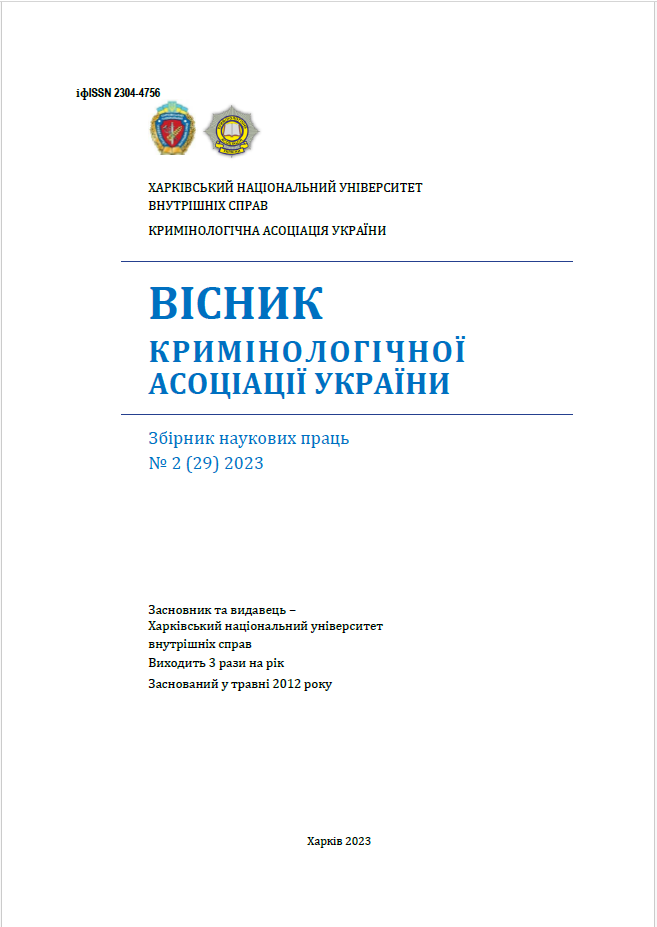CRIMINOLOGY ORIENTATIONS IN THE STRATEGY OF TRANSITIONAL JUSTICE FOR UKRAINE: CARTOGRAPHY OF THE COLLECTIVE WAR TRAUMAS
Main Article Content
Abstract
The article is devoted to the development of criminological orientations in the strategy of transitional justice through the analysis of collective traumas of war. It has been established that war trauma is an all-encompassing socio-psychological phenomenon that reaches the deepest layers of the collective unconscious, expresses attacks on the openness of social time, on attachment, on identity and the ability to symbolize. Depending on the nature of practices and physical proximity to traumatic factors, traumatic-combat, migration-traumatic, passive-traumatic, occupation-traumatic, post-occupation-traumatic and integrated-traumatic social-activity plots are identified and characterized, within which the corresponding criminological types are formed and manifested victims: neurotic victim, aggressive victim-resentimental, victim-aggressor, monologic victim, disintegrated victim and marginal victim, neurotic victim-actionist. It has been found that each of these types has its own special content of criminogenic potential, which in one way or another is capable of being realized in violent criminal offenses, in particular, hate crimes, border crime. A three-dimensional matrix of collective war traumas is presented, which includes phenomenological-structural, functional-psychogenic, and mental-interpretive dimensions.
Article Details

This work is licensed under a Creative Commons Attribution 4.0 International License.
